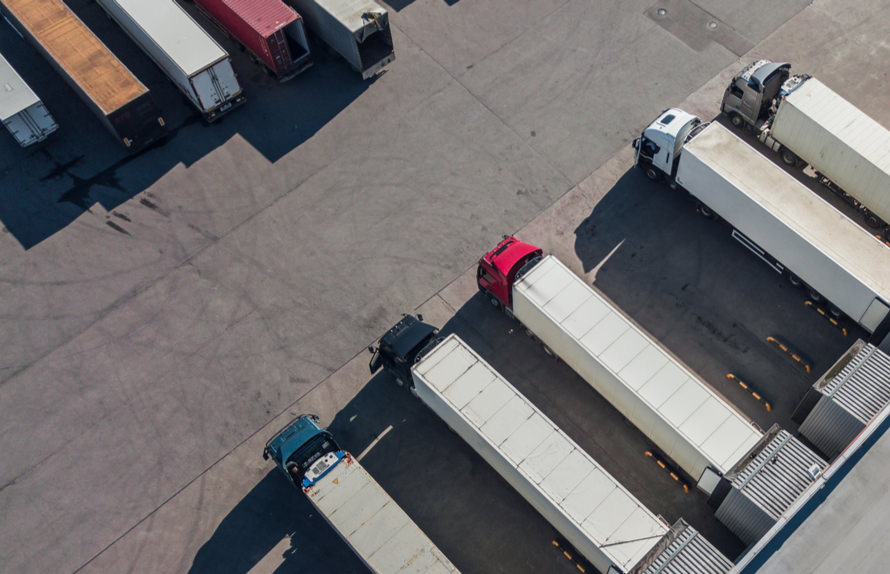
With abrupt tariff changes and rapidly shifting US trade policies, the pressure is on global brands to optimize supply chain strategies. Failure to do so may result in paying extremely high import rates, and either losing customers to product price hikes or absorbing the costs and losing massive revenue.
Two tools often considered by importers and exporters are Foreign Trade Zones (FTZs) and bonded warehouses. While both offer opportunities to delay or reduce duties for the US customs territory, their practical applications differ significantly—and so do the timelines and headaches involved.
It’s important to closely consider the impact and administrative costs of these two international shipping and fulfillment options before implementing.

What are Bonded Warehouses: Short-Term Storage with Flexibility
A customs bonded warehouse is a secure storage facility where imported goods can be held without paying duties until they’re shipped to their final destination—ideal for global businesses managing cross-border orders or delaying customs fees.
Bonded warehouses are best suited for short-term storage, particularly for goods entering the US temporarily. A common scenario involves inbound shipments arriving in the US but ultimately destined for Canada. In this case, bonded warehouses allow brands to store foreign goods without immediately paying import duties no matter the customs entry type, provided those goods do not enter the domestic market. This is so that brands don’t pay customs duties upon import and then need a customs fee adjustment based on re-export.
However, this isn’t a simple or quick solution. Bonded warehouse certification is governed by US Customs and Border Protection (CBP), but the process varies by region. For instance, in Long Beach, California—a major entry point for West Coast imports—the CBP certification process can take up to six months. After approval, facilities still need to be inspected, and CBP is currently dealing with significant backlogs. Each city must also act as the “Guarantor,” requiring city council approval—a bureaucratic hurdle that slows everything down.
Using Foreign Trade Zone (FTZ) in International Shipping: Ideal for Long-Term, High-Volume Operations
On the other hand, foreign trade zones (also called free trade zones) offer a more robust set of capabilities but come with added complexity. FTZs are ideal for longer-term storage and operations involving value-added services like assembly, kitting, or product transformation. For example, if a business wants to convert products from one SKU to another—say, repackaging or adding components—FTZs allow for these changes without triggering immediate customs duties.
However, the operational burden in an FTZ is significant. Every transaction must be mirrored in the Customs Management Platform (CMP), and all international shipping documentation must be precisely filed. The process is slow, particularly because the government systems involved are notorious for downtime and inefficiency.
For a warehouse to acquire FTZ certification requires strict compliance: 24/7 security, surveillance cameras, fencing, and full documentation from everyone in the building. Businesses must work closely with government agencies to maintain certification—a time-consuming and often frustrating process.
Pros and Cons of Using an FTZ Warehouse
- Benefit: Duty deferral and savings. You can delay or reduce tariffs, especially when modifying goods or assembling products within the zone.
- Benefit: Long-term storage and transformation. Ideal for businesses needing to change SKUs, repackage, or customize products before final distribution.
- Drawback: Heavy compliance burden. Requires mirrored transactions in CMP and strict security protocols.
- Drawback: Slower supply chain. Transaction times are hampered by slow government systems and certification delays.
Pros and Cons of Using Bonded Warehousing
- Benefit: Short-term duty relief. Store imported goods without paying duties until they enter the domestic market—or export them to avoid duties altogether.
- Benefit: Ideal for cross-border shipments. Perfect for goods coming into the US with final destination in Canada or other international markets.
- Drawback: Regional and bureaucratic delays. Certification is managed locally, requires city council approval, and can take 6+ months depending on the region—plus long waits for CBP inspections.
Bottom Line
The key to success is understanding your operational goals and timelines. Don’t make drastic changes to your supply chain unless you’re ready to stick with them for the long-term.
Do you need flexibility in routing international shipments? Bonded warehouses may suffice. Do you require the ability to transform inventory while deferring duties? An FTZ could provide long-term value—if you’re ready for the heavy lift in compliance.
Tariff policy and customs procedures are evolving rapidly. Product brands must weigh speed against complexity, and cost savings against operational burden. Whether you go the bonded or FTZ route, preparation is everything. Start early, know your region’s requirements, and align your strategy with your supply chain goals.
This post was written by Maureen Walsh, Marketing Manager at DCL Logistics. A writer and blogging specialist for over 15 years, she helps create quality resources for ecommerce brands looking to optimize their business.
Tags: International








